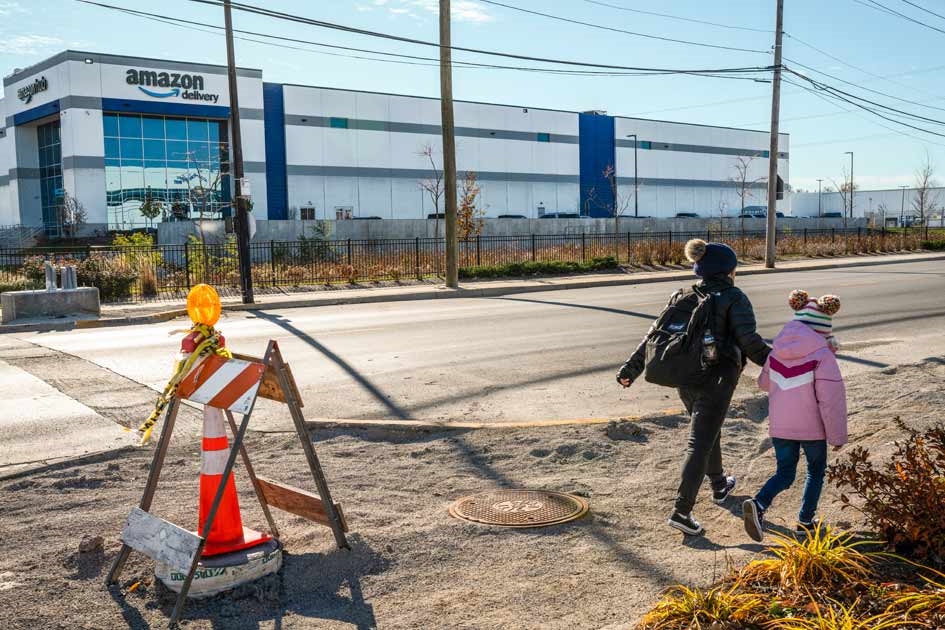The expansion of Amazon makes communities pay the price
Hundreds of neighborhoods have seen Amazon warehouses open near their homes, with more than half being low-income families.
-

Children walk to a school 1 mile within the warehouse (The Guardian)
Individuals of color and low-income people are disproportionately harmed by Amazon's warehouses, according to Consumer Reports.
Residents report increased air pollution, noise, and more hazardous streets as a result of trucks and vans. Within a one-mile radius of Amazon facilities, there are more persons of color than the typical neighborhood in respective metro regions.
José Mendez, an 18-year resident of Gage Park, says his 5 a.m. commute now entails struggling to get by semis for space on a nearby residential street. Although his wife has made a complaint with Amazon, the trucks are still present.
In most cases, warehouse operators are not held liable for pollution caused by accompanying vehicles and vans.
Aside from being low-income communities, neighborhoods where Amazon opens warehouses often have a greater proportion of people of color than 70% or more of the surrounding metro area’s neighborhoods.
-

International and US Census (The Guardian)
New warehouse, same disruption
In 2021, Amazon opened close to 300 new facilities – almost as many as in the previous four years combined.
The company is bringing Amazon warehouses to dozens of new cities, and residents are forced to face traffic and pollution from trucks and vans, but may also benefit from increased job opportunities. According to CR's analysis, Amazon opened more than 115 warehouses within a mile of where at least 5,000 people live.
Quinta Warren, the associate director for sustainability policy at Consumer Reports, said, “Amazon is taking advantage of a national legacy of racist policies that have kept cities across the country segregated for generations and have resulted in disproportionate health and environmental impacts to communities of color."
That's a whopping two-thirds as many as Walmart's total warehouses.
Dreamhouse or real nightmare?
The Kolde family moved into their dream home in Fontana, California, six years ago; it was surrounded by trees and a park. When an Amazon warehouse opened two years ago, the noise became unbearable. Now, their 11-year-old son keeps the TV on all night to drown out the constant growl of engines on the street.
There are two reasons why the environmental hazard from one warehouse is usually uncertain.
Firstly, warehouse emissions are not tracked by the government, EPA, or Amazon.
Secondly, emission permits are not required from the operators of the warehouse.
Amazon, however, has pledged to deploy 100,000 zero-emission vans by 2030 and already operates a number of them. In the 2020 sustainability report, the company said electric vehicles delivered more than 20 million packages in North America and Europe.
It has also promised zero carbon emissions by 2040.
It is worth noting that Amazon acquired ten battery-powered freight trucks from a Canadian company last year, but it hasn't stated if it plans to electrify the rest of its heavy-duty fleet.

 3 Min Read
3 Min Read








